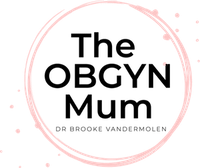Until recently, I’ve never been asked much about menstrual cups, but a new study was published in the Lancet so it’s been a hot topic! You can find my expert comment for this opinion piece published in Net Doctor here!
What are they?

Menstrual cups collect rather than absorb period blood. They fit into the vagina and are reusable.
Once inserted they create a suction seal to stop any seepage of blood.
They can collect more menstrual blood than tampons or pads, but need to be emptied and washed regularly.
As they are cheap and reusable they are potentially life-changing for women in third world countries, which could potentially help to end the period poverty of women who cant go to school or leave the house due to lack of adequate sanitary protection.
If more women switched to plastic-free sanitary products, it would also be much more sustainable for the environment by reducing the impact on landfill as plastic-containing period products take thousands of years to decompose!
Tips for insertion
There are a variety of cups on the market, and may have slightly different techniques to making them feel most comfortable so make sure you check the instructions for yours.
The cups are usually inserted folded, and you can hold onto it firmly with your finger and thumb. With the other hand part the labia and introduce the cup. When comfortable, release the cup to allow it to open up.
Twisting once released can help to maintain position. If it doesn’t feel comfortable then remove and try again.

How to remove:
Wash hands and try to relax. With one leg up or squatting, grasp the bottom of the cup and squeeze to break the seal. Remove by holding it from the base rather than just the stem. Tip the contents into the toilet, rinse and reinsert as required.
Common misconceptions:
There is a misconception that a cup will be messy, or leak more but the Lancet article showed that leakage with the menstrual cups was similar or less than with disposable pads or tampons.
Many also worry about infections, specifically Toxic Shock Syndrome (associated with tampon use). However the same study showed this risk is considered low with menstrual cups.
Can I use with an IUD?
I was so excited to partner with the amazing ladies from @Putacupinit, a brilliant and informative site and instagram page that shares all the tips you need for using a menstrual cup. Together we created this video about using a menstrual cup with an IUD:
To date studies have not shown significant risk in cup exclusion or dislodgement. It is a good idea to wait until 3 months after IUD insertion before using menstrual cups, and ensure the strings of the IUD are trimmed short so it doesnt get tangled in the cup.
If you feel discomfort or tugging when removing the cup then stop & seek medical advice.

1 Comment
-
Comments are closed.I have been considering switching to using a menstrual cup soon. It is good to know that they aren’t messy. That has always been a concern of mine when it comes to using one. Also, it might be smart for me to talk to a Gynaecologist about if menstrual cups would be a good fit for me and my lifestyle.